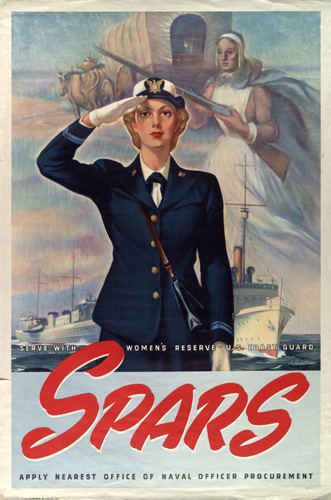Sarah Sundin's Blog, page 112
November 27, 2022
Today in World War II History—November 27, 1942

French ships Strasbourg, Colbert, Algérie, and Marseillaise burning in Toulon harbor, France, after being scuttled, 28 Nov 1942; photo taken by RAF aircraft (Library of Congress: LC-USW33-026496-D)
80 Years Ago—Nov. 27, 1942: Germans occupy Toulon, France.
French scuttle fleet in Toulon so warships won’t fall into German hands—77 ships are destroyed.
Goodrich produces its first bale of synthetic rubber in the US rubber program.
US Army introduces K ration, with three meal packages for breakfast, dinner, and supper.
The post Today in World War II History—November 27, 1942 first appeared on Sarah Sundin.November 26, 2022
Today in World War II History—November 26, 1942

Original theatrical release poster for the film Casablanca, 1942 (public domain via Warner Bros, via Wikipedia)
80 Years Ago—Nov. 26, 1942: First battle between US & German tanks, at Coxen’s Farm near Chouïgui, Tunisia.
“Battle of Brisbane”: thousands of US and Australian soldiers fight in streets, 1 killed.
Movie premiere of Casablanca, starring Humphrey Bogart and Ingrid Bergman, in New York City.
US celebrates Thanksgiving; Macy’s Thanksgiving Day Parade is cancelled for duration of the war to conserve rubber and helium. (Read more: “Thanksgiving in World War II”)

USMC Lt. Col. W.W. Stickney preparing to cut a Thanksgiving cake with a captured Japanese sword, Guadalcanal, 26 Nov 1942 (US Marine Corps photo)
The post Today in World War II History—November 26, 1942 first appeared on Sarah Sundin.November 25, 2022
Today in World War II History—November 25, 1942

Luftwaffe Ju 52 cargo plane approaching Stalingrad during the air lift, late 1942 (Australian War Memorial: P02018.181)
80 Years Ago—Nov. 25, 1942: Luftwaffe begins air lift to German troops surrounded in Stalingrad.
British make deadly failed attempt to take Medjez el Bab, Tunisia.
Greek resistance army ELAS and British SOE agents destroy vital Gorgopotamos Viaduct, one of the first major sabotage operations in Europe.
The post Today in World War II History—November 25, 1942 first appeared on Sarah Sundin.November 24, 2022
Today in World War II History—November 24, 1942

Crew of M3 Grant medium tank, US 13th Armored Regiment, Souk el Arba, Tunisia, 23 Nov 1942 (US Army Signal Corps photo: NA-COO-42-217)
80 Years Ago—Nov. 24, 1942: Hitler orders troops trapped in Stalingrad not to retreat or surrender.
US renews offensive in Tunisia toward Tunis and Bizerte.
News from the Polish underground of the mass extermination of 2 million Jews is broadcast in the US by Rabbi Stephen Wise, president of the World Jewish Congress.
The post Today in World War II History—November 24, 1942 first appeared on Sarah Sundin.November 23, 2022
Today in World War II History—November 23, 1942

Recruiting poster for the SPARs, the US Coast Guard Women’s Reserve, WWII
80 Years Ago—Nov. 23, 1942: British Eighth Army under Montgomery drives Germans back to defenses at El Agheila, Libya.
Senegal and the vital port of Dakar come under Allied control after governor-general of French West Africa abandons Vichy ties.
Off mouth of Amazon, German U-boat U-172 sinks British freighter Benlomond; the sole survivor, Chief Steward Poon Lim, begins a 133-day ordeal in a lifeboat.
US Coast Guard Women’s Reserve is established, the SPARs (“Semper paratus—always ready”).
The post Today in World War II History—November 23, 1942 first appeared on Sarah Sundin.November 22, 2022
Today in World War II History—November 22, 1942

German troops at Stalingrad, Russia, late 1942 (US National Archives)
80 Years Ago—Nov. 22, 1942: Soviets surround German 6th Army (250,000 men) in Stalingrad.
Allied and Vichy French forces sign armistice in North Africa.
Sir Stafford Cripps resigns from British War Cabinet and as Leader of the House of Commons; replaced by Sir Anthony Eden.
The post Today in World War II History—November 22, 1942 first appeared on Sarah Sundin.November 21, 2022
Make It Do – Coffee Rationing in World War II

Eighty years ago, coffee rationing began in the United States. Although not necessary for survival—though that’s debatable—coffee has been a staple in the American diet since the Boston Tea Party, and coffee rationing was extremely unpopular.
Why Coffee?
U-123 preparing to fire on surface vessel off East Coast, Jan-Feb 1942 (German Federal Archive, Bild 101II-MW-4008-20)
During World War II, Latin America produced bumper crops of coffee beans, and those countries were Allies or neutral. However, all coffee came to America by sea, and German U-boats ravaged Allied shipping in the Caribbean and along the Eastern Seaboard in 1942.
As Samuel Eliot Morison says in The Battle of the Atlantic, September 1939-May 1943, the first volume in his classic history of the US Navy, “In times of war [these shipping lanes] tap the most important world sources of coffee, cotton, sugar, oil, iron, steel and bauxite. These commodities, with the possible exception of coffee, are essential to a nation engaging in modern warfare; and, although the United States Navy might win a war without coffee, it hopes never to be forced to make the experiment.”
Not only were cargoes of coffee beans lost to the depths of the ocean, but shipping space needed to be diverted to military use. To make sure men in uniform received enough, civilians had to do with less.
Shortages and Rationing
US rationing books owned by my mother and grandmother, WWII (Photo: Sarah Sundin)
In April 1942, the US government limited coffee roasting companies to 75 percent of the previous supply, further reduced to 65 percent in September 1942. However, shortages persisted and rationing was instituted.
In preparation for rationing, on November 22, 1942, sales of coffee were halted to prevent hoarding. On November 29, 1942, rationing began. Americans had received War Ration Book One in May 1942 for sugar rationing, so the Office of Price Administration merely adjusted the value of the stamps. Stamps #19-28 were each designated for one pound of coffee during a specified five-week period. When the time period expired, so did the stamp. Coffee stamps could only be redeemed for family members over the age of fifteen.
On February 3, 1943, the ration was reduced to one pound every six weeks.
Making Do
US poster, 1943
One pound every five to six weeks produced less than one cup a day. While some coffee drinkers benefited from the generosity of non-coffee-drinking friends or family members, most made do with less. Reusing grounds made a watery beverage dubbed “Roosevelt coffee” in honor of the president. People found if they used less and percolated longer, they could stretch their ration further. Coffee substitutes such as chicory or Postum (wheat bran, wheat, molasses, and maltodextrin) were used grudgingly or mixed with real coffee.
Another war victim was the familiar coffee can. Due to a shortage of tin, manufacturers packaged coffee in glass jars.
All Bad Things Come to an EndOn July 28, 1943, President Franklin D. Roosevelt—who had patriotically switched his morning beverage from coffee to milk—announced the end of coffee rationing. Coffee was the first item to come off rationing. However, in September 1944, the Office of Price Administration raised the price of coffee to curtail demand—under the threat of a return to rationing. A threat that never came to be.
What do you think? How would you get by on one cup a day?
The post Make It Do – Coffee Rationing in World War II first appeared on Sarah Sundin.Today in World War II History—November 21, 1942

Shoulder patch of US Ninth Air Force, WWII
80 Years Ago—Nov. 21, 1942: US Ninth Air Force based in Egypt begins attacks on German-occupied port of Tripoli, Libya.
Cartoon character Tweety Bird debuts in “Tale of Two Kitties.”
The post Today in World War II History—November 21, 1942 first appeared on Sarah Sundin.November 20, 2022
Today in World War II History—November 20, 1942

Map of British Eighth Army advances November 1942-February 1943 (US Army map)
80 Years Ago—Nov. 20, 1942: British Eighth Army takes Benghazi, Libya, but finds port destroyed by Germans.
Soviets attack German southern flank at Stalingrad.
Gen. Paul von Kleist is placed in command of German Army Group A on the Eastern Front.
The post Today in World War II History—November 20, 1942 first appeared on Sarah Sundin.November 19, 2022
Today in World War II History—November 19, 1942

Publicity photo of Fred Astaire and Rita Hayworth for 1942 film You Were Never Lovelier (public domain via Columbia Pictures via Wikipedia)
80 Years Ago—Nov. 19, 1942: Soviets launch offensive at Stalingrad against the weak German northern flank, the high point of German expansion on the Eastern Front.
US troops first fight Germans in Tunisia, at Medjez el Bab.
British commandos fly by glider to raid heavy water plant in Telemark, Norway; glider crashes, 23 survivors are captured by the Germans and executed.
Movie premiere of You Were Never Lovelier, starring Fred Astaire & Rita Hayworth.
The post Today in World War II History—November 19, 1942 first appeared on Sarah Sundin.


